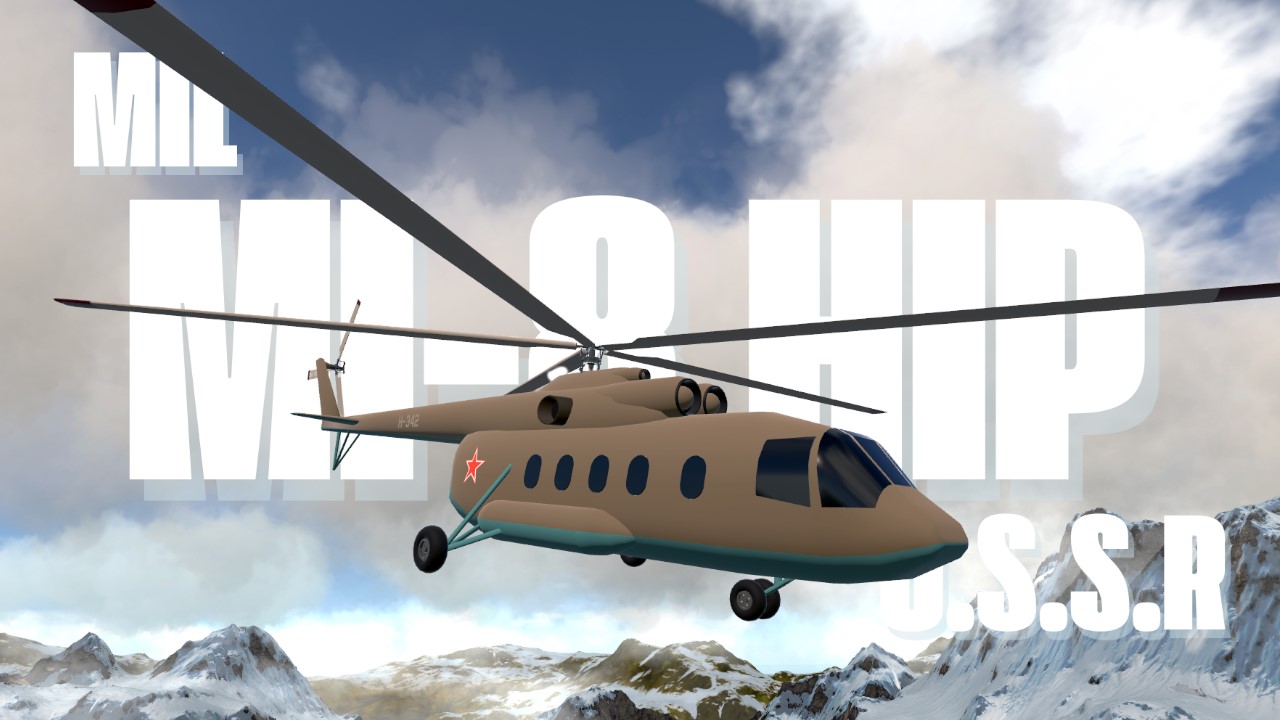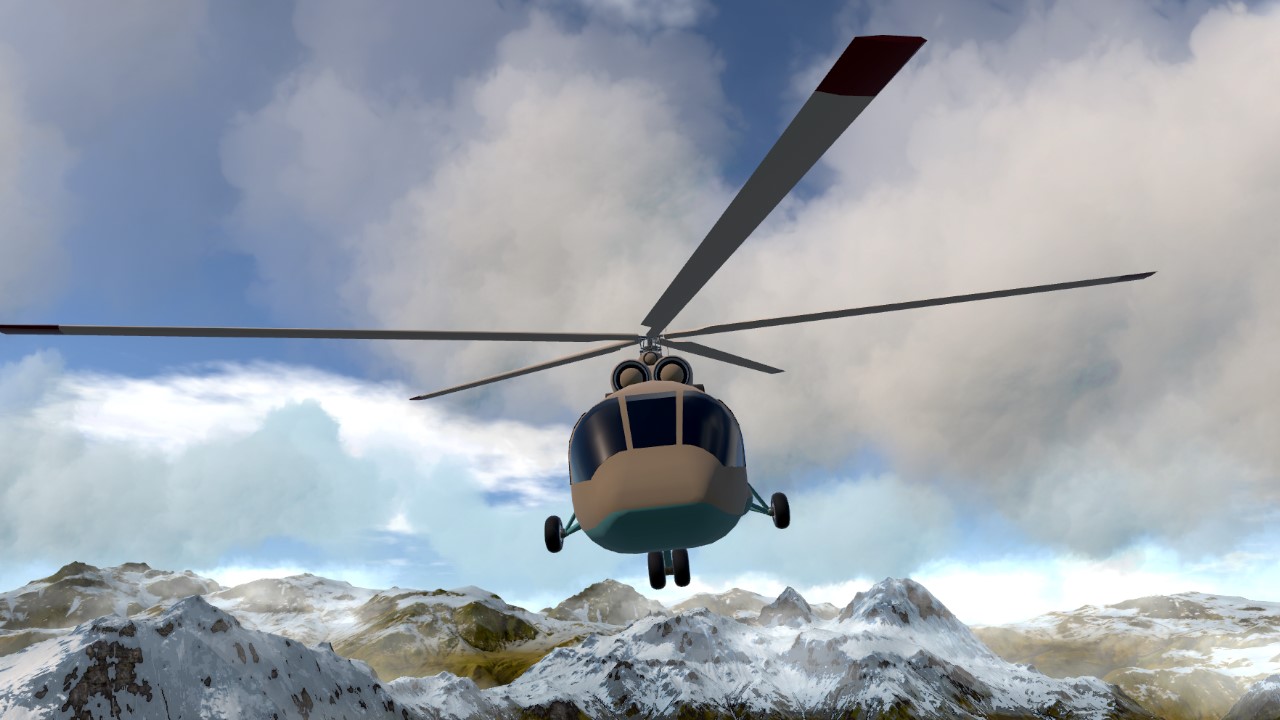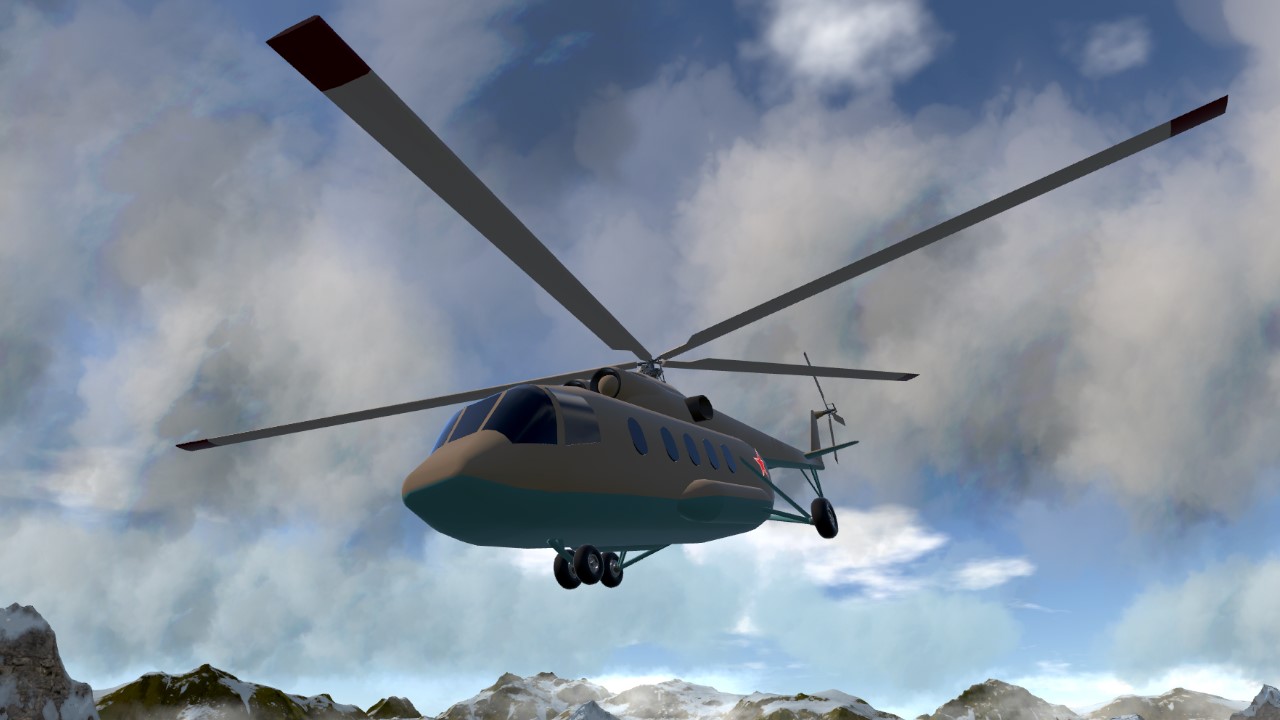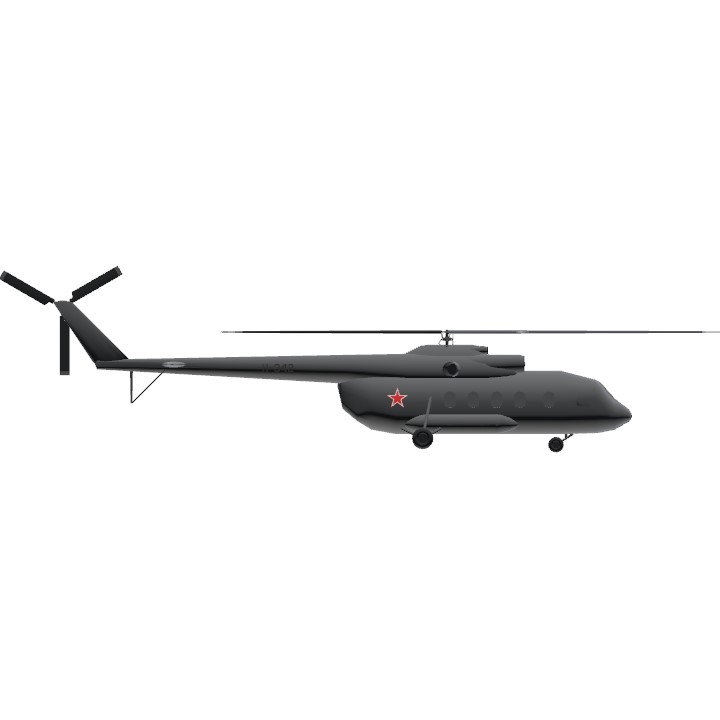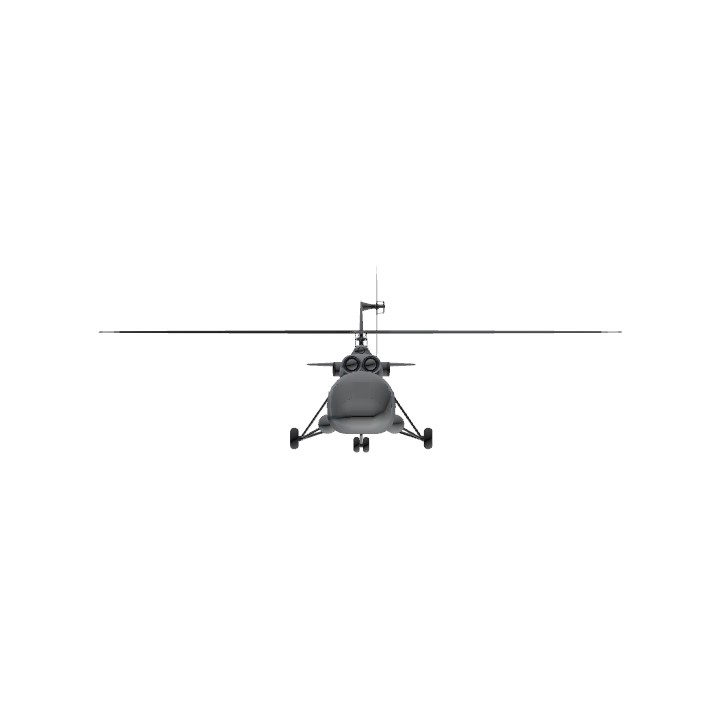Description:
The Mil Mi-8, NATO codename "Hip," is a twin-turbine medium-lift helicopter designed by the Soviet Union. Renowned for its reliability and adaptability, the Mi-8 serves a wide range of roles in both civilian and military operations. It features a five-bladed main rotor, a distinctive tail rotor, and a spacious cabin capable of seating 24 passengers or carrying up to 4,000 kg (8,818 lbs) of cargo. Powered by two Klimov TV2-117 or later TV3-117 engines, the helicopter offers a cruising speed of 230 km/h (143 mph) and a maximum range of 450 km (280 miles). Its rugged construction and ease of maintenance make it suitable for various environments and challenging conditions.
Background:
The Mi-8 was developed in the late 1950s as a successor to the Mi-4, focusing on improving capacity, range, and overall performance. Under the guidance of Mikhail Mil, the design incorporated advanced turbine technology and modular construction, enabling it to be customized for different missions. Its versatility and robust engineering have allowed it to perform roles ranging from cargo transport and medevac to search and rescue and combat support.
History:
The Mi-8 first flew in 1961 and entered service in 1967. Since then, it has become one of the most-produced helicopters in history, with over 17,000 units built. It has been exported to more than 80 countries and has served in a variety of military and civilian applications. The Mi-8 played a crucial role during the Soviet-Afghan War, demonstrating its durability in combat conditions. Civilians rely on the Mi-8 for tasks such as disaster relief, VIP transport, and heavy-lift operations.
Numerous variants have been developed, including the heavily armored Mi-17 and the advanced Mi-171. These variants highlight the helicopter's adaptability and its continued relevance in modern aviation. The Mi-8’s legacy as a global workhorse remains unmatched, with operators worldwide still relying on its proven capabilities.
Specifications
General Characteristics
- Created On Windows
- Wingspan 44.2ft (13.5m)
- Length 60.7ft (18.5m)
- Height 15.6ft (4.7m)
- Empty Weight N/A
- Loaded Weight 7,407lbs (3,360kg)
Performance
- Power/Weight Ratio 17.024
- Wing Loading N/A
- Wing Area 0.0ft2 (0.0m2)
- Drag Points 4948
Parts
- Number of Parts 132
- Control Surfaces 0
- Performance Cost 568

